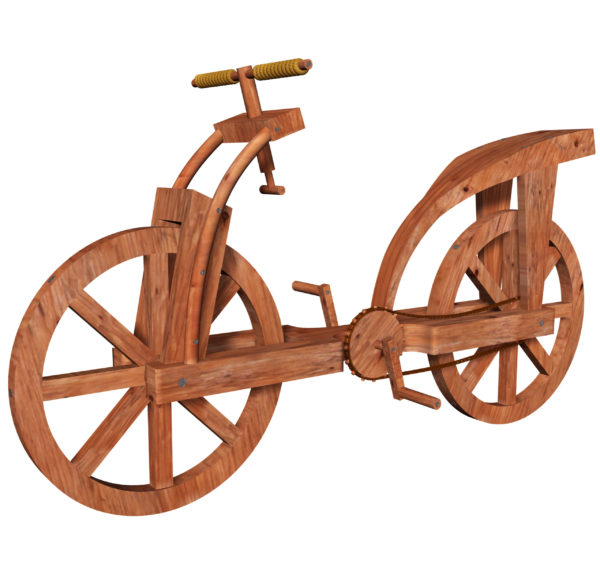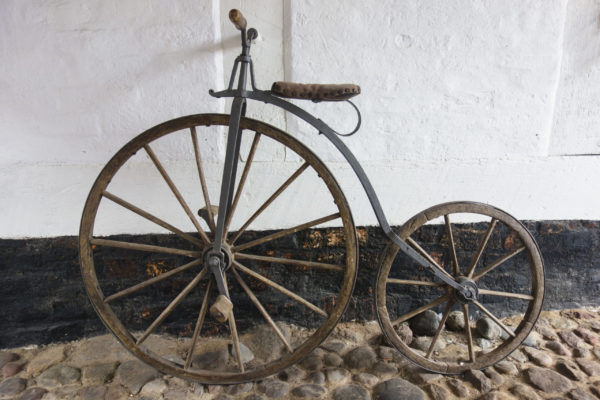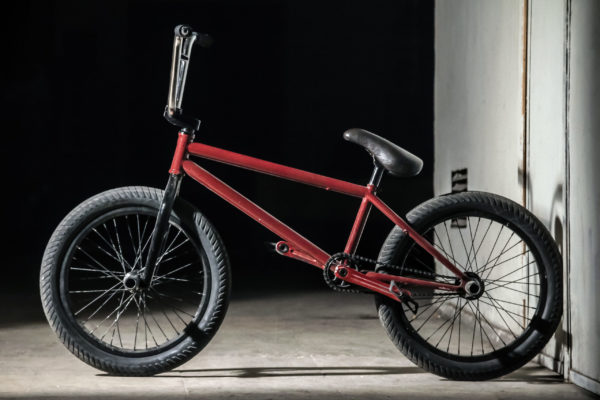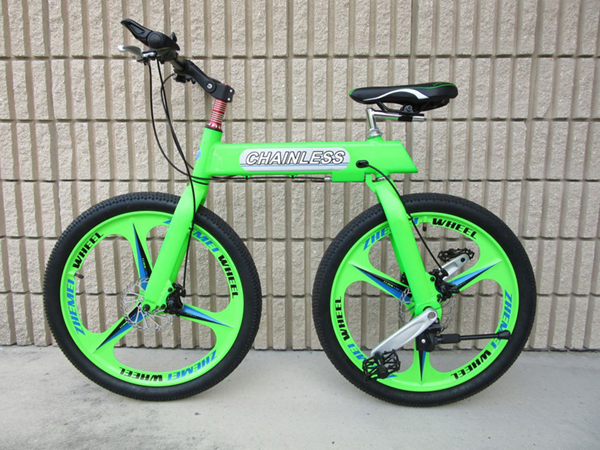Learning to ride a bike is a milestone. And, while bikes have been commonplace in our lives forever, do you know anything about their history? It’s a lot more interesting – and amusing – than you might think. Here we offer a brief rundown, from its humble origins to modern-day advancements.
The first designs

The earliest records of a bike-like creation date back to the 15th century. In Italy, Giovanni Fontana created a four-wheel, human-powered vehicle that used a rope to connect gears to the wheels. Around the same time, fellow Italian, Leonardo da Vinci, may have devised plans for a bicycle, though the drawings attributed to him haven’t been authenticated.
The first bike
Nothing on record really happened with the bike until 1817. This was when a two-wheeled vehicle called the velocipede appeared in Europe. Invented by a German, Baron von Drais, it was meant for farmers to replace their draft horses when plowing. The velocipede, made of wood, didn’t have pedals, so riders had to push themselves along with their feet.
The addition of pedals
In 1839, some smart folks in Scotland decided to put pedals on a velocipede. They were connected to the rear wheel without a chain.
In 1845 in England, pneumatic tires were introduced to the bike. A couple of decades later, a French bicycle was introduced that had a similar frame as the velocipede but added front wheels and pedals in a fixed-gear, one-speed configuration. The stiff frame of this bike produced a lot of shaking on rocky roads, leading it to be nicknamed the “Boneshaker.”
The penny-farthing is born

In 1870, a ridiculous-looking bike with a huge front wheel and minuscule back wheel hit the scene in England. While the penny-farthing greatly reduced the vibrations felt on the Boneshaker, it required a lot of skill to not only get on but actually balance. It was also incredibly expensive, as the average worker would’ve needed half a year’s salary to pay for one.
Over the next several years, many innovations were added to bikes, including radial spokes, ball bearings, and caliper brakes.
A bike much like our own
15 years after the penny-farthing was unveiled, John Kemp Starley introduced his Rover, which was the first rear-wheel-drive bike that had a chain that connected the pedals to the back wheel. This bicycle closely resembled modern bicycles, though it was lacking pneumatic wheels. These would be added in 1888 when Dr. John Boyd Dunlop rediscovered them and was instrumental in their mass production. Not long after that, E. H. Hodgkison created the first three-speed shifter.
New innovations
Bike advancements started coming fast around the turn of the 20th century. In France, a manufacturer started making frames out of aluminum. In Germany, seamless steel tubing was invented, which allowed for curved designs. During World War I, a portable folding bike was created for the Italian army. In addition to pneumatic tires, it had a leaf spring on the bottom bracket and a telescoping seat. Considered the precursor to the mountain bike, Schwinn took the design and improved it in the 1930s. Their version had a cantilevered frame made of heavy-duty steel, along with oversized tires.
Bikes get faster and tougher

The focus of bikes from the 50s to the 70s mostly centered around racing and other competitive events. In 1963, Schwinn unveiled its Sting-Ray, which was instrumental in the creation of BMX racing.
The first true mountain bikes were developed in 1977 in California, and 10 years later, a full-suspension mountain bike hit the market. Other notable advancements include the first integrated brake and gear levers introduced by Shimano in 1990, and SRAM’s disc brakes in 1994, which are now standard on mountain bikes.
Not your grandad’s bike

source: http://www.getchainless.com/
While bikes haven’t changed a whole lot over the past four decades, there is a new type that harkens back to the days of the first model. The chainless model offers a unique, chainless riding experience. It has magnesium alloy wheels that are extremely durable and increase speed performance. It also has front and rear disc brakes for excellent stopping power. On top of that, it’s foldable, so you can bring it anywhere.
What comes next for the bicycle?
Did you know any of this history? Let us know if there were things that surprised you or if there are future advancements you’d like to see in the comments below and share this article with your bike-enjoying friends!
featured image source: https://unsplash.com